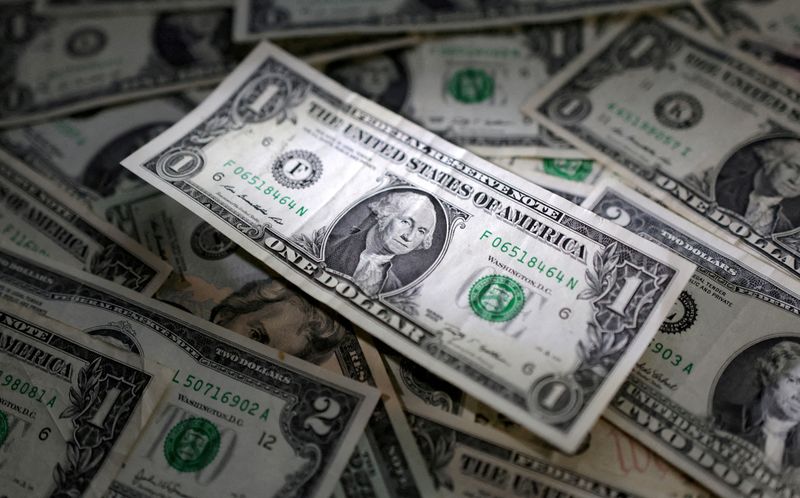Forex
Funds on verge of long dollar flip: McGeever


© Reuters. FILE PHOTO: U.S. dollar banknotes are seen in this illustration taken March 10, 2023. REUTERS/Dado Ruvic/Illustration/File Photo
By Jamie McGeever
ORLANDO, Florida (Reuters) -Hedge funds cut their net short dollar position by nearly $5 billion last week, according to the latest U.S. futures markets data, the biggest swing towards a more bullish dollar stance since May last year.
The move away from a bearish dollar position and the dollar’s rally over the last couple of months, however, have been so steady that a period of consolidation or profit-taking reversal must surely be looming.
Commodity Futures Trading Commission figures show that the value of funds’ short dollar position against G10 currencies plus the Mexican peso and Brazilian real fell to $2.25 billion in the week to September 12 from $7.17 billion the week before.
It was sixth week out seven that speculators have turned more bullish on the dollar – or less bearish, if you prefer – and they are now on the verge of flipping to an outright net long position for the first time since November.
The dollar-positive shift, in light of resilient U.S. economic data, bond yields and rate expectations – nominally and relative to major peers – has been pretty rapid.
Less than two months ago, funds’ were net short of dollars to the tune of $21.3 billion, the biggest bet against the greenback since June 2021.
Speculators’ net short dollar position against just the G10 currencies, which was worth $18 billion as recently as July, has now completely evaporated.
A short position is essentially a wager an asset’s price will fall, and a long position is a bet it will rise. Hedge funds often take directional bets on currencies, hoping to get on the right side of long-term trends.
This is broadly reflected in CFTC positioning cycles.
The biggest move in the latest week was in the euro. Funds cut their net long holdings by 23,151 contracts to 113,080 contracts, the smallest net long since November and the biggest week-on-week reduction since June last year.
The European Central Bank’s ‘dovish hike’ last week could encourage further long liquidation from the speculative community, whose position is still effectively a $15 billion bet that the euro will rise.
But ECB hawks are banging the drum that no more rate hikes does not mean rates will be cut any time soon, and again, fatigue may set in – funds have cut their net long euro position 14 weeks out of the last 17.
The euro has now weakened against the dollar for nine weeks straight, its worst weekly run since the currency was launched in 1999.
The flip side is the , a measure of the dollar’s value against a basket of major currencies, is up nine weeks in a row, its best run since 2014.
The latest CFTC data showed that funds are still holding a large net short yen position worth $8.4 billion, a position that hasn’t changed much over the last few weeks.
The Bank of Japan and U.S. Federal Reserve policy meetings this week, however, could give the yen and dollar clearer direction into year end.
(The opinions expressed here are those of the author, a columnist for Reuters.)

 Forex3 years ago
Forex3 years agoForex Today: the dollar is gaining strength amid gloomy sentiment at the start of the Fed’s week

 Forex3 years ago
Forex3 years agoUnbiased review of Pocket Option broker

 Forex3 years ago
Forex3 years agoDollar to pound sterling exchange rate today: Pound plummeted to its lowest since 1985

 Forex3 years ago
Forex3 years agoHow is the Australian dollar doing today?

 Cryptocurrency3 years ago
Cryptocurrency3 years agoWhat happened in the crypto market – current events today

 World3 years ago
World3 years agoWhy are modern video games an art form?

 Commodities3 years ago
Commodities3 years agoCopper continues to fall in price on expectations of lower demand in China

 Economy3 years ago
Economy3 years agoCrude oil tankers double in price due to EU anti-Russian sanctions





















